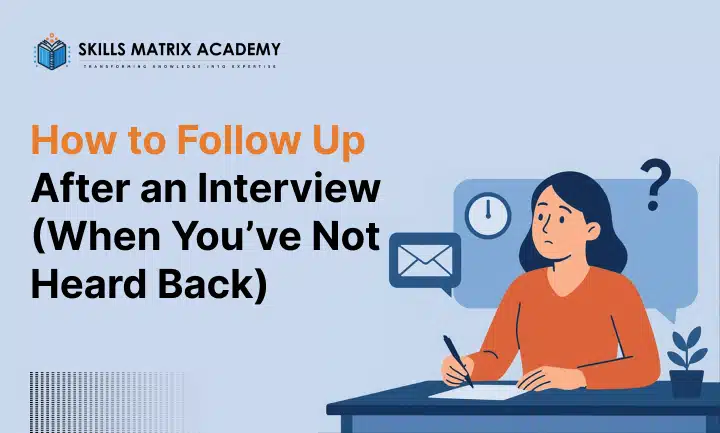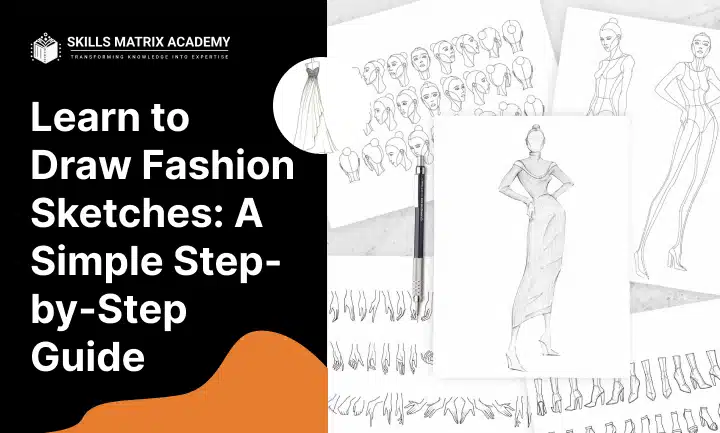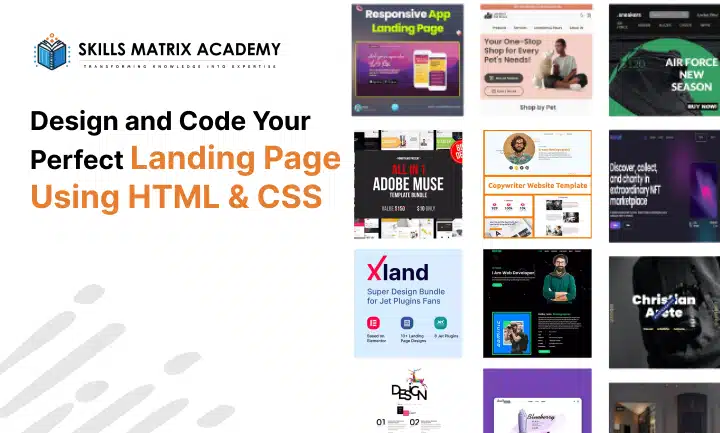The Post-Interview Silence
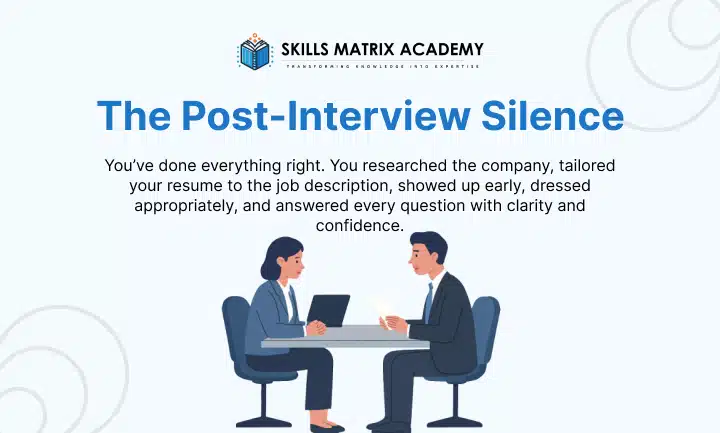
You’ve done everything right. You researched the company, tailored your resume to the job description, showed up early, dressed appropriately, and answered every question with clarity and confidence. You even sent a thank-you note afterward—a gesture that many candidates overlook.
But now, days have passed. Maybe even weeks. And your inbox is still empty.
This silence can be confusing, frustrating, and emotionally draining. You start to wonder:
- Did I say something wrong?
- Have they already hired someone else?
- Should I reach out again or just move on?
According to a 2025 candidate experience survey, over 40% of job seekers never receive any feedback after an interview, even when they’re still being considered. That means nearly half of candidates are left in limbo, unsure whether to wait, follow up, or pursue other opportunities.
The real issue isn’t just the lack of communication—it’s the uncertainty. Silence after an interview creates a vacuum where doubt, anxiety, and hesitation thrive. You’re left guessing, and that guessing game can stall your momentum, shake your confidence, and make you hesitant to take the next step in your job search.
But here’s the truth: not hearing back doesn’t necessarily mean rejection. It could mean the hiring process is delayed, the team is still evaluating candidates, or internal priorities have shifted. In many cases, it has nothing to do with you.
Still, silence is not a reason to stay passive. It’s a signal to act—strategically, respectfully, and professionally.
Why Waiting Hurts More Than You Think
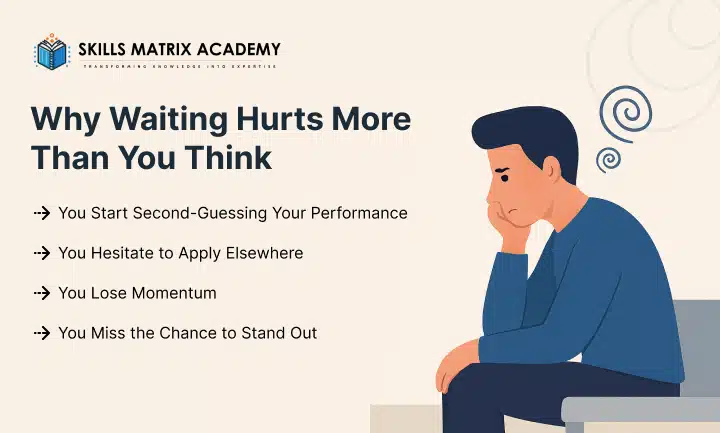
Waiting in silence isn’t just uncomfortable—it can actively work against you. Here’s how:
1. You Start Second-Guessing Your Performance
It’s natural to replay the interview in your head. You analyze every answer, every pause, every facial expression. You wonder if you should’ve asked different questions or emphasized different experiences. This mental loop can lead to unnecessary self-doubt and anxiety, especially when there’s no feedback to anchor your thoughts.
Overthinking can erode your confidence, making you feel less prepared for future interviews. It can also cause you to misinterpret the silence as a personal failure, which it rarely is.
2. You Hesitate to Apply Elsewhere
Many candidates fall into the trap of waiting. You think, “What if they call tomorrow?” So you hold off on applying to other roles, fearing that you’ll get an offer and have to turn down another opportunity. This hesitation can cost you valuable time and momentum.
The job market moves quickly. Roles open and close daily. By waiting, you risk missing out on positions that might be a better fit or have a faster hiring process.
3. You Lose Momentum
Job searching is a rhythm. When you’re actively applying, networking, and interviewing, you build momentum. But silence can disrupt that flow. You start checking your inbox obsessively, refreshing your email, and waiting for a call that may never come.
This passive waiting can lead to burnout, frustration, and a loss of motivation. It’s harder to stay proactive when you feel stuck in limbo.
4. You Miss the Chance to Stand Out
In competitive hiring environments, visibility matters. Hiring managers are juggling multiple candidates, meetings, and internal priorities. A thoughtful follow-up can bring your name back to the top of their inbox and remind them of your strengths.
A 2025 hiring behavior study found that candidates who sent a follow-up email within a week were 25% more likely to receive a response, even if the outcome wasn’t favorable. That’s not because hiring managers forgot—it’s because follow-ups show initiative, professionalism, and genuine interest.
What to Include in Your Follow-Up Email
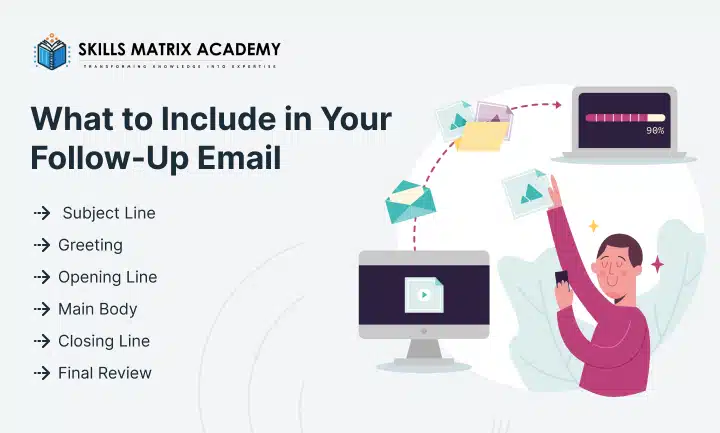
Crafting a follow-up email after an interview doesn’t require flair—it requires clarity, professionalism, and purpose. Your message should be easy to read, respectful in tone, and focused on one goal: checking in on the status of your application.
Here’s a breakdown of what to include:
1. Subject Line
Keep it straightforward. The best subject lines are clear and recognizable. If you’re replying to an existing thread, simply respond within it. If you’re starting a new email, use a format that helps the recipient immediately identify who you are and why you’re writing.
Example: Re: Interview Follow-Up – [Your Name], [Job Title], [Interview Date]
Avoid vague phrases like “Just checking in” or “Quick question.” These don’t convey context and may get overlooked.
2. Greeting
Use the appropriate level of formality. If you were on a first-name basis during the interview, it’s fine to continue that tone. Otherwise, default to a formal greeting using their title and last name.
Examples:
- “Hi Priya,” (if you were on first-name terms)
- “Dear Mr. Mehta,” (if the tone was formal)
When in doubt, err on the side of professionalism.
3. Opening Line
Start by expressing appreciation. A simple thank-you for their time sets a respectful tone and reminds them of your previous interaction.
Example: “Thank you again for taking the time to speak with me last Thursday about the [Job Title] role.”
4. Main Body
This is the core of your message. Keep it concise and focused:
- Mention the job title and interview date to provide context.
- Reassert your interest in the job and the firm.
- Politely ask if there are any updates regarding the hiring timeline or next steps.
- Offer to provide any additional information if needed.
Example: “I’m writing to follow up on our conversation regarding the [Job Title] position. I remain very interested in the opportunity and would appreciate any updates you can share about the next steps in the process.”
5. Closing Line
End with a courteous sign-off that invites continued communication.
Example: “Please feel free to reach out if you need anything further from my side. I look forward to hearing from you.”
Then close with a simple “Thank you” followed by your full name.
6. Final Review
Before hitting send, take a moment to proofread. Check for spelling errors, awkward phrasing, or formatting issues. A clean, well-written email reflects your attention to detail—something every employer values.
Quick checklist:
- Is the message spaced and easy to read?
- Are names and dates accurate?
- Is the tone professional and polite?
- Have you run a spellcheck?
A polished follow-up doesn’t just show interest—it shows you care about how you communicate.
A Step-by-Step Guide to Following Up After an Interview

Following up isn’t about pestering—it’s about staying proactive. Done right, it shows that you’re engaged, respectful, and serious about the opportunity. Here’s how to follow up effectively, without crossing the line.
1. Understand the Right Timing
Timing is everything when it comes to follow-ups. Too soon, and you risk seeming impatient. Too late, and you might be forgotten. The goal is to strike a balance between being proactive and being respectful.
Here’s a realistic timeline to follow:
| Scenario | When to Follow Up |
| Interviewer gave a timeline | Wait until the stated date passes, then follow up the next business day |
| No timeline given | Wait 5–7 business days before sending your first follow-up |
| Still no response | Send a second follow-up after another 7 days |
| Final attempt | Send a third and final message after 2 weeks from your last email |
Why this works:
- It gives the hiring team enough time to make decisions.
- It keeps you visible without being intrusive.
- It shows that you respect their process and aren’t rushing them.
This cadence also helps you stay organized. You’re not guessing when to follow up—you’re following a structured plan.
2. Ready to Reach Out? Try This Customizable Follow-Up Email Format
Your first follow-up should be polite, professional, and to the point. Avoid emotional appeals or vague language. The goal is to remind them of your interest and invite an update.
Subject Line: Interview Follow-Up – [Your Name]
Body: Hi [Interviewer’s Name],
Thank you again for the opportunity to speak with you on [Interview Date] regarding the [Job Title] role. I enjoyed our conversation and learning more about the team’s goals and the position’s responsibilities.
I wanted to check in to see if there are any updates regarding the next steps in the hiring process. I remain very interested in the role and would be happy to provide any additional information if needed.
Looking forward to hearing from you.
Best regards,
[Your Full Name]
Why it works:
- It’s respectful and professional.
- It reminds them of your enthusiasm.
- It invites a response without sounding demanding.
This message also reinforces your communication skills—something many employers value highly.
3. What to Do If You Still Don’t Hear Back
If a week passes and you haven’t received a reply, it’s time for a second follow-up. This message should be slightly more direct but still courteous.
Subject Line: Second Follow-Up – [Your Name] / [Job Title]
Body:
Hi [Interviewer’s Name],
I hope you’re doing well. I wanted to follow up on my interview for the [Job Title] position on [Date]. I’m still very interested in the opportunity and would appreciate any updates you can share regarding the hiring timeline.
Thank you again for your time and consideration.
Best regards,
[Your Full Name]
Why it works:
- It shows persistence without pressure.
- It reminds them of your interest.
- It keeps the conversation open.
Pro tip: Keep applying elsewhere. Following up doesn’t mean putting your job search on hold. Stay active and open to other opportunities.
4. The Final Follow-Up: Closing the Loop
If you’ve sent two emails and still haven’t heard back after 2–3 weeks, it’s time for a final message. This isn’t about chasing—it’s about closure.
Subject Line: Final Follow-Up – [Your Name]
Body:
Hi [Interviewer’s Name],
I wanted to send a final follow-up regarding my interview for the [Job Title] role on [Date]. I understand things may have shifted internally, and if the team has moved forward with another candidate, I completely understand.
If there’s still potential to continue the conversation, I’d be glad to reconnect. Either way, I appreciate the opportunity to speak with you and wish you all the best in your hiring process.
Warm regards,
[Your Full Name]
Why it works:
- It’s respectful and professional.
- It leaves the door open for future engagement.
- It gives you closure, allowing you to move forward confidently.
Even if you don’t get a reply, you’ve ended the conversation with grace and professionalism.
Case Study Insight: Why Follow-Ups Work
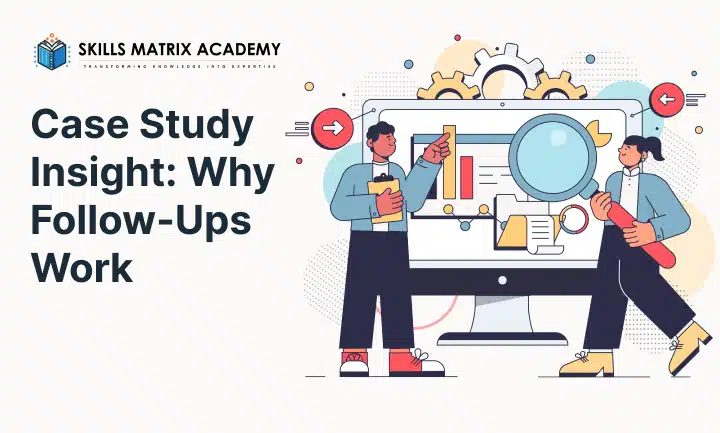
Let’s look at a real-world example.
In a 2025 hiring behavior study conducted across 1,000 job applications at mid-sized firms:
- Candidates who followed up once had a 16% higher callback rate.
- Those who followed up twice saw a 23% increase.
- Candidates who didn’t follow up were often forgotten, especially in roles with 50+ applicants.
What this shows:
Follow-ups aren’t annoying—they’re necessary. They help you stand out in a crowded field and remind hiring managers that you’re still interested.
Keep Your Tone Professional and Purposeful
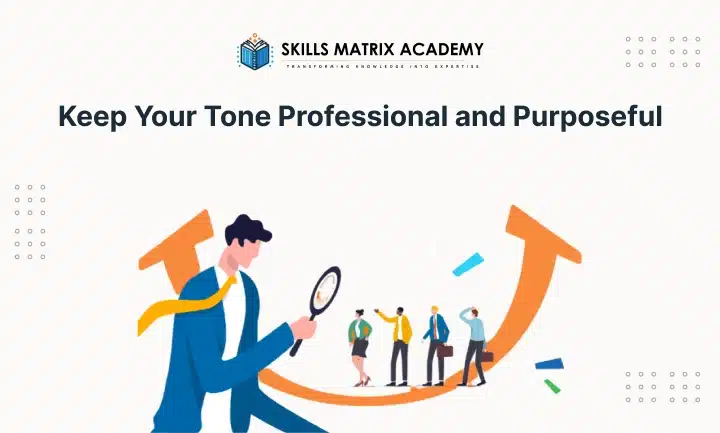
No matter how casual or formal your interview felt, your follow-up message should maintain a tone of professionalism and respect. This isn’t the moment for witty remarks, sarcasm, or self-deprecating humor—even if you bonded with the interviewer over shared interests. Your goal is to seek clarity, not entertain. Keep your language focused, polite, and direct. A well-written follow-up should clearly state your intent: you’re checking in on the status of the hiring process and reaffirming your interest in the role. Avoid over-explaining or emotional appeals. Instead, let your message reflect maturity, confidence, and appreciation for the opportunity. Brevity paired with clarity is your best approach.
Tips for Job Seekers

If you’re applying for roles online, your follow-up strategy should align with your digital presence. Here’s how:
- Use a professional email signature with your LinkedIn profile link.
- Keep your subject lines clear: Avoid vague phrases like “Just checking in.”
- Include keywords like “interview follow-up,” “job application status,” and “next steps” to help your email stand out in inbox searches.
These small tweaks can make a big difference.
What Not to Do When Following Up
Here are some common mistakes to avoid:
- Don’t follow up too soon: Sending a message the day after your interview can seem impatient. Give the team time to review candidates.
- Don’t send multiple emails in one week: Space out your communication to avoid overwhelming the recipient.
Tools to Help You Track Follow-Ups
If you’re applying to multiple roles, use tools like:
- Spreadsheets to log interview dates, follow-up timelines, and responses
- Email scheduling tools to send follow-ups at optimal times
- Templates that you personalize for each role
Staying organized helps you stay proactive.
Final Thoughts: Follow-Up Is a Skill, Not a Gamble
Following up after an interview isn’t about chasing—it’s about showing initiative, professionalism, and genuine interest. Silence doesn’t always mean rejection. Sometimes, it’s just a delay.
By following a structured, respectful approach, you increase your chances of getting clarity—and possibly, the job.
Remember: the goal isn’t just to get a reply. It’s to leave a lasting impression.


